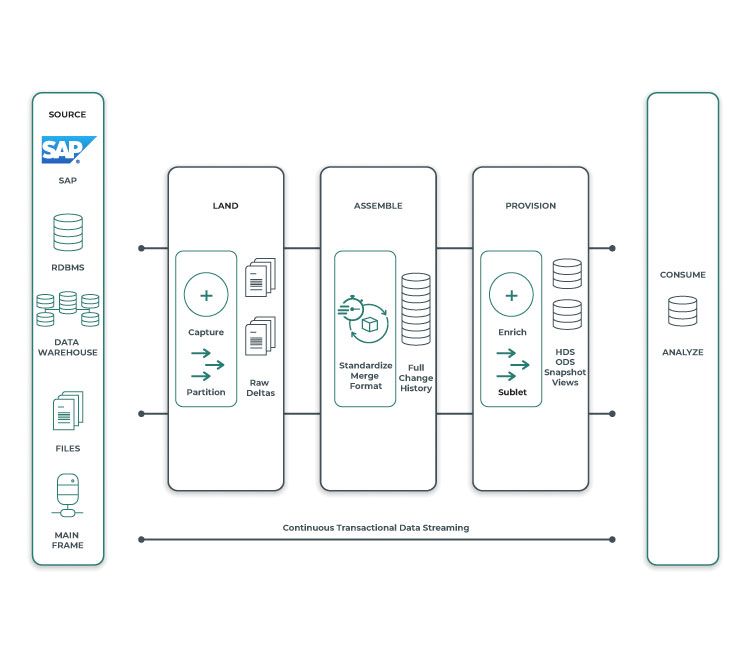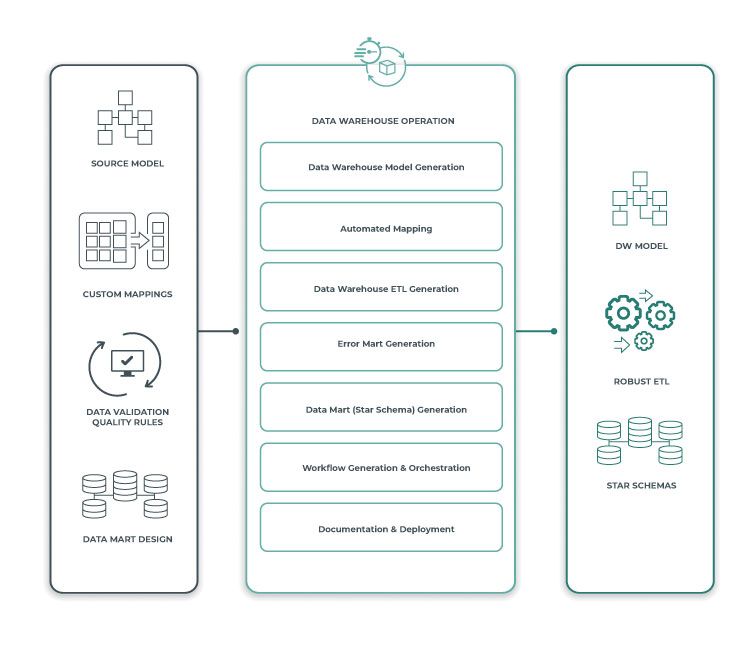In the world of big data, two terms are often used interchangeably but are quite different: data lakes and data warehouses. In this article, we try to understand what they mean and how they are relevant for data analytics companies.
What Is a Data Lake?
A data lake is a system that stores data in its rawest form, typically as object blobs or files. The data within a data lake can originate from various sources, including databases, social media streams, web clickstreams, sensors, and so on. Data lakes are often used in organizations where data scientists and analysts may need to access diverse data sets for their work.

(Image source: Qlik.com)
What Is a Data Warehouse?
A data warehouse is a type of data storage designed specifically for analytical purposes. Unlike a data lake, which stores data in its raw, unprocessed form, a data warehouse contains data that has been cleaned, organized, and designed to be easy to query. As such, businesses typically use data warehouses to support decision-making and strategic planning.

(Image source: Qlik.com)
So, what are the key differences between these two types of data storage? Let’s take a closer look.
Data Storage
Data lakes store raw, unstructured data in its native format. This means that data lakes can store any type of data, including images, videos, audio, and logs. On the other hand, data warehouses store structured data that has been filtered and processed for a specific purpose, such as analytics or reporting.
Users
Data lakes are typically accessed by developers and analysts looking to mine the raw data for insights. Data warehouses are accessed by business users who need to generate reports or run analytics on structured data.
Analysis
In a data lake, analysis is typically done using predictive analytics, machine learning, data visualization, BI, and big data analytics because the unstructured nature of the raw data requires complex processing power. Data visualization, BI, and data analytics are typically used in a data warehouse.
Schema
Data lakes have what’s known as an “open schema,” which means that there is no predefined schema – the raw data can be stored in any format. Data warehouses have a “closed schema,” which means that all of the data must fit into predefined categories for it to be stored in the system.
Processing Speed
The speed at which data can be processed also differs between these two types of systems. Because it stores raw, unstructured data, a data lake does not have to go through an ETL (extract-transform-load) process to load new data into the system – it can be loaded directly into the lake. On the other hand, because it stores structured data that has been filtered and processed, a data warehouse does have to go through an ETL process to load new data into the system – the new data must first be extracted from its source, transformed to fit into the predefined schema, and then loaded into the warehouse.
Costs
Data lakes are typically less expensive to set up than data warehouses because they do not require costly hardware or software investments – just commodity hardware and open-source software will suffice. Data warehouses, on the other hand, are more expensive to set up because they require specialized hardware and software investments.
When deciding whether or not to implement a data lake or data warehouse, it’s important to weigh those differences against your organization’s needs to make the best decision for your particular use case. For more information on data management solutions, contact Expeed today.

Expeed Software is a global software company specializing in application development, data analytics, digital transformation services, and user experience solutions. As an organization, we have worked with some of the largest companies in the world, helping them build custom software products, automate processes, drive digital transformation, and become more data-driven enterprises. Our focus is on delivering products and solutions that enhance efficiency, reduce costs, and offer scalability.


